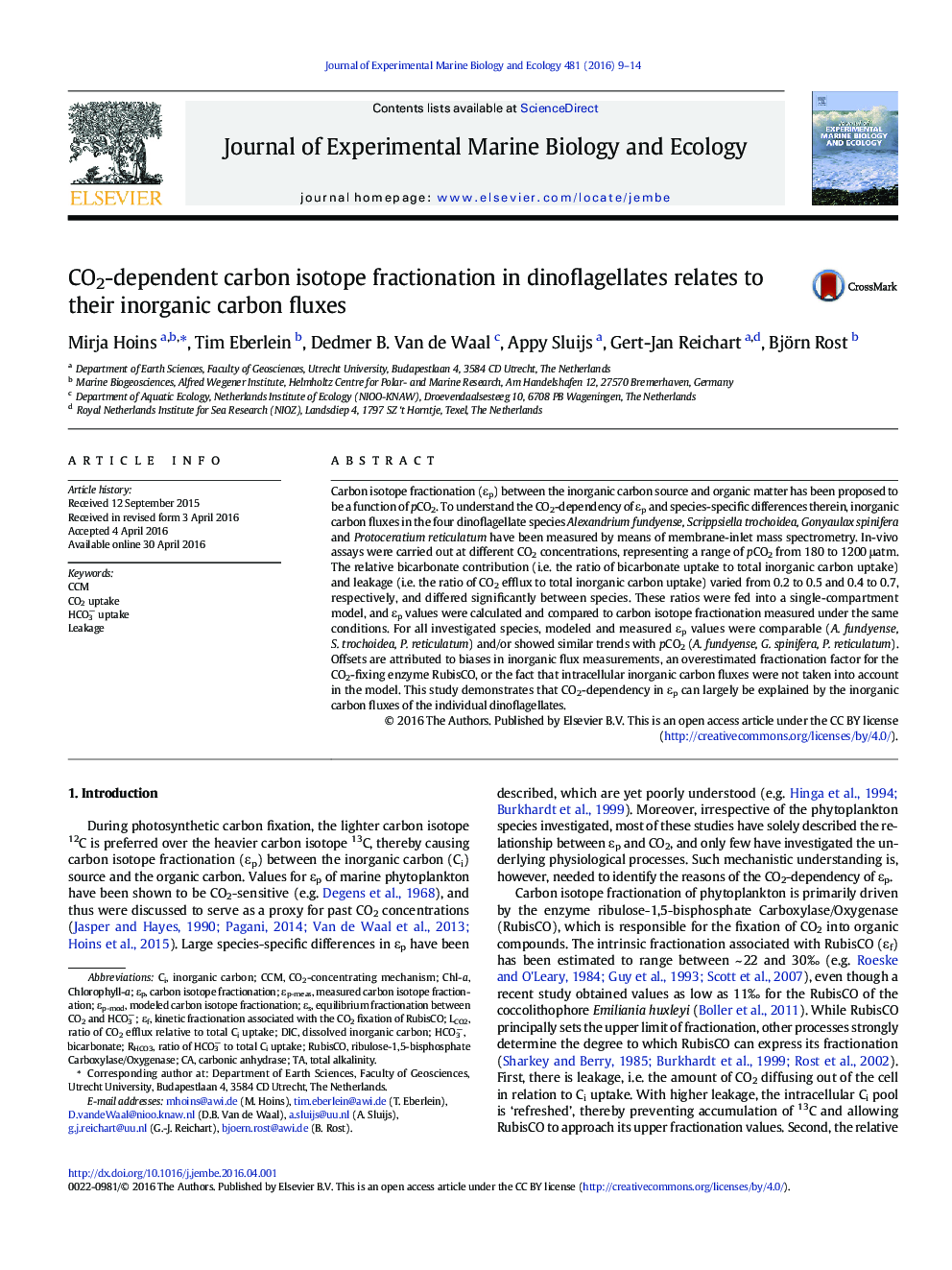| Article ID | Journal | Published Year | Pages | File Type |
|---|---|---|---|---|
| 6303728 | Journal of Experimental Marine Biology and Ecology | 2016 | 6 Pages |
â¢To understand 13C fractionation in dinoflagellates, inorganic carbon fluxes were measured by MIMS and used for modeling.â¢Changes in cellular carbon fluxes, i.e. HCO3â contribution and CO2 leakage were CO2-dependent.â¢These CO2-dependencies could largely explain the CO2-dependent fractionation patterns observed in the four tested species.
Carbon isotope fractionation (εp) between the inorganic carbon source and organic matter has been proposed to be a function of pCO2. To understand the CO2-dependency of εp and species-specific differences therein, inorganic carbon fluxes in the four dinoflagellate species Alexandrium fundyense, Scrippsiella trochoidea, Gonyaulax spinifera and Protoceratium reticulatum have been measured by means of membrane-inlet mass spectrometry. In-vivo assays were carried out at different CO2 concentrations, representing a range of pCO2 from 180 to 1200 μatm. The relative bicarbonate contribution (i.e. the ratio of bicarbonate uptake to total inorganic carbon uptake) and leakage (i.e. the ratio of CO2 efflux to total inorganic carbon uptake) varied from 0.2 to 0.5 and 0.4 to 0.7, respectively, and differed significantly between species. These ratios were fed into a single-compartment model, and εp values were calculated and compared to carbon isotope fractionation measured under the same conditions. For all investigated species, modeled and measured εp values were comparable (A. fundyense, S. trochoidea, P. reticulatum) and/or showed similar trends with pCO2 (A. fundyense, G. spinifera, P. reticulatum). Offsets are attributed to biases in inorganic flux measurements, an overestimated fractionation factor for the CO2-fixing enzyme RubisCO, or the fact that intracellular inorganic carbon fluxes were not taken into account in the model. This study demonstrates that CO2-dependency in εp can largely be explained by the inorganic carbon fluxes of the individual dinoflagellates.
